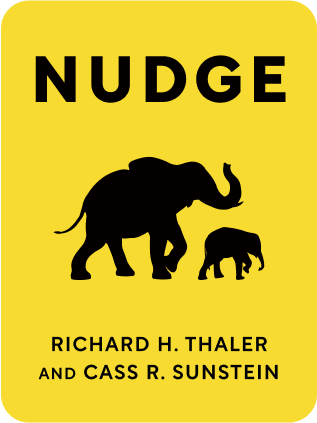

This article is an excerpt from the Shortform summary of "Nudge" by Richard H. Thaler and Cass R. Sunstein. Shortform has the world's best summaries of books you should be reading.
Like this article? Sign up for a free trial here .
What is the Reflective System? How does it differ from the Automatic System?
The Reflective System is the type of thinking that is deliberate. In contrast, the Automatic System has instinctive thinking. Both systems are a part of how we make decisions.
Read more about the Reflective System.
Overview of the Reflective System
Many psychologists and neuroscientists have begun to theorize the brain’s function by drawing a distinction between intuitive, instinctual thinking and deliberate, rational thinking: the Automatic System and the Reflective System.
The Automatic System comprises the almost instantaneous actions or reactions that, in normal conversation, we might call “unthinking.” This system is engaged when we flinch at motion near our face or adopt a silly voice to address a pet or child; it also includes what we mean when we say we have a “gut feeling” about something. (It also happens to be the part of our brain we share with our pets.)
The Reflective System, oppositely, is what we engage when we apply our brains to something consciously, for example, a nonobvious math problem or a career decision. When we say we’re “mulling it over” or “considering all the options,” we’re using the Reflective System or using reflective thinking.
Although the Automatic System is essential in certain situations—for example, when we grasp the railing if we trip on the stairs—it can get us into trouble when a situation calls for slow, conscious thought (for example, when deciding with health insurance plan to choose). A key finding of the behavioral economics literature is that humans far too often think automatically when they should be thinking reflectively.
Robust Feedback Mechanisms
Many of Humans’ most egregious mistakes occur when they make once-or-twice-in-a-lifetime decisions, for which information and feedback are in short supply—for example, taking out a mortgage or choosing a health insurance plan. Decisions made with reflective thinking can be hard.
The libertarian paternalistic answer to mistakes born of insufficient feedback is a regulatory system known as Record, Evaluate, and Compare Alternative Prices (RECAP).
Under a RECAP regime, public and private entities are required to provide clear and replicable reports of all essential data concerning their products. This data can then be used to compare prices, fees, and features with competing products. This contrasts to “fine print” features of contracts or hidden fees.
For example, as it concerns mortgages, RECAP would require mortgage lenders to provide borrowers with an electronic file with the loan’s interest rate, all applicable fees, and a schedule of payments over the life of the loan. The file could then be uploaded into third-party software for comparison with other files uploaded by other users. In other words, RECAP allows Humans to use their Reflective System rather than their Automatic one.
Improving Feedback
A noninvasive means to better informing the public of environmental costs is strengthening the disclosure requirements for firms. The evidence shows that even in the absence of explicit emissions caps or regulations, a statute that mandates firms track and publicly disclose the environmental impacts of their business activities has significant corrective effects.
The Emergency Planning and Community Right to Know Act, enacted by the US Congress in 1986 in the aftermath of the Chernobyl disaster in Ukraine, is a case in point. The statute requires firms to disclose publicly the types and amounts of toxic chemicals they’re either storing or releasing into the environment. This data is then compiled in the Toxic Release Inventory (which can be found on the Environmental Protection Agency’s website). Even though the Inventory is essentially a bookkeeping effort—that is, no punishments are triggered by firms’ disclosures—it has resulted in large reductions in toxic chemical releases. This is because major polluters are “blacklisted” by environmental groups, resulting in bad publicity and reduced revenues. Essentially, lists like these work as a social nudge, pushing companies toward more environmentally-conscious practices.
To combat climate change, for example, using the nudge of better feedback, governments could create a “Greenhouse Gas Inventory” that records data from the largest emitters. Another possibility is to mandate that cars feature a sticker that reports their fuel economy and average annual gas costs—the idea being that people will be less inclined to buy gas guzzlers when they have to advertise how (in)efficient their car is.
An even bolder application of this kind of nudge would find it curtailing individuals’ energy use. One idea is to give individuals constant feedback on their energy use—one researcher used an “Ambient Orb” that glowed green when energy use was low, red when energy use was high—and then to facilitate the public sharing of that information, perhaps via social media or an online registry. That way, individuals could compare their energy use with others and “compete” to be the most energy efficient. People process this information with reflective thinking.

———End of Preview———
Like what you just read? Read the rest of the world's best summary of Richard H. Thaler and Cass R. Sunstein's "Nudge" at Shortform .
Here's what you'll find in our full Nudge summary :
- Why subtle changes, like switching the order of two choices, can dramatically change your response
- How to increase the organ donation rate by over 50% through one simple change
- The best way for society to balance individual freedom with social welfare






